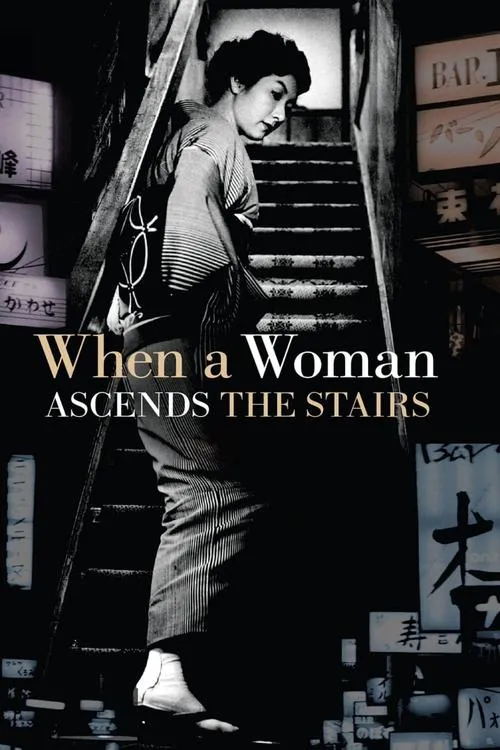When a Woman Ascends the Stairs

Plot
When a Woman Ascends the Stairs, a poignant film directed by Mikio Naruse, delves into the life of a hostess, Keiko, as she navigates the complexities of her societal role and personal identity in 1950s Japan. Keiko, affectionately known as Mama by those around her, takes the audience through her story, offering a candid look at her experiences as a single mother, widow, and hostess in Tokyo's upscale Ginza district. As the narrative unfolds, it becomes apparent that Keiko's life is a delicate balance of pretenses and realities. With a perpetual smile plastered on her face, she expertly navigates the world of high-society patrons, who often come with their own secrets and vices. The film reveals the cruel irony of Keiko's situation, where she must adopt a carefree, almost masochistic air to attract and retain her clients, all while her true emotions simmer beneath the surface. One of the primary concerns driving Keiko's actions is her need for financial stability. As the sole breadwinner for her family, she must work tirelessly to make ends meet, even when the expenses far exceed her earnings. Her mother and brother, who live off her wealth, contribute to the pressure, making it increasingly difficult for Keiko to maintain a sense of control over her life. Moreover, the societal expectations placed upon Keiko as a single woman are relentless. With age catching up to her, she begins to feel the weight of time and the limited opportunities available to her. Her body, once a prized asset in a male-dominated society, is slowly losing its allure, and the consequences are far-reaching. The loss of her beauty, coupled with her dwindling earning potential, leaves Keiko feeling trapped and disillusioned with her circumstances. Throughout the film, Mikio Naruse masterfully employs cinematography to evoke a sense of melancholy, underscoring the emotional struggles Keiko faces. Composed in a stark, elegant manner, the film's visuals serve as a poignant reminder of the fragility of Keiko's existence. Naruse's deliberate pacing, too, contributes significantly to the emotional resonance of the narrative, allowing the audience to absorb the depths of Keiko's despair. As the story progresses, the viewer is privy to glimpses of Keiko's inner world, revealing a multifaceted personality that defies the stereotypical portrayal of a "hostess." Beneath the façade of a happy-go-lucky entertainer lies a complex, vulnerable individual, struggling to maintain a sense of self-worth despite the societal pressures that surround her. Through her narrative, Keiko sheds light on the lives of countless women like her, who toiled in obscurity, bound by the confines of tradition and social norms. Her story serves as a testament to the resilience of women throughout history, who have endured immense hardships and sacrificed their desires in order to maintain the illusion of a 'respectable' life. In the context of post-World War II Japan, When a Woman Ascends the Stairs is a powerful exploration of the changing social roles and expectations of women during this transformative period. The film highlights the stark realities faced by those living on the periphery of society, who worked tirelessly to support their families, all while navigating the ever-present threat of poverty, loneliness, and marginalization. Ultimately, the film presents a poignant portrayal of a woman's struggle for autonomy and self-discovery in a world defined by patriarchal norms and societal expectations. As Keiko struggles to rise above the confines of her circumstances, When a Woman Ascends the Stairs becomes a powerful elegy for the women who have been forgotten, ignored, or silenced throughout history.
Reviews
Recommendations




